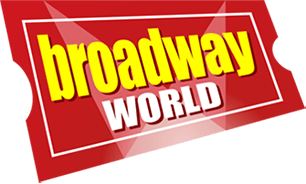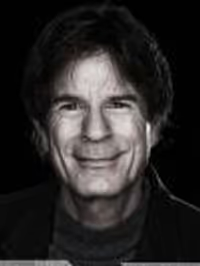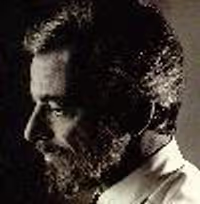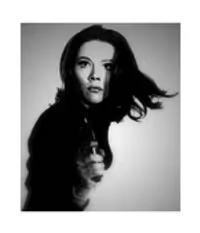2 Questions for Broadway Veterans/Experts
#02 Questions for Broadway Veterans/Experts
Posted: 3/12/05 at 11:56am1) When did musicals start being miked? A little history about that phenomenon, please??? 2) What are the reasons that (even taking into consideration inflation) Broadway musicals cost SOOO much more than they did in years past? Related question: How was is that musicals in the "Golden Years" could recoup their money in a single season but now take years and years to get out of the red? I thank you in advance for your expert responses!
#1re: 2 Questions for Broadway Veterans/Experts
Posted: 3/12/05 at 2:37pm
I am sure Margo could probably give you a really good answer for these 21 questions! My stab at it.....
In the early 70's when I saw my 1st show, Purlie, I remember the mikes along the front edge of the stage. I would assume that body miking started somewhere in the mid to late 70's. Not quite sure when the forehead mikes started but I noticed them in the early 90's. They may have started in the late 80's.
I would assume the answer to your second question is the rise in cost of production. Shows now have way more special effects and more advanced staging than they used to. I would also assume that there is more elaborate costuming. So that probably translates into a larger stage crew, more technicians and more costumers. Which means more people to pay and a higher ticket price.
I am sure others will add to my answers!
#2re: 2 Questions for Broadway Veterans/Experts
Posted: 3/12/05 at 4:16pmIn a New York Times article, Anthony Tommasini recounts how electronic sound systems, introduced on Broadway in 1940, and later with hidden body microphones and wireless transmitters in 1964, spelt the death knell of skilled singing and subtle lyrics in favor of brassy sound and "numbing spectacle."
#3re: 2 Questions for Broadway Veterans/Experts
Posted: 3/12/05 at 4:28pmthe last show NOT to use a mike was Annie... so 1977 is about right. Everything cost less in the "Golden Age" not to mentio, performances were EVERYDAY, including matinees, so that's more performances per week. Basically, the sets, salaries, lighting, everything cost less. You also didn't need to pay for amplification... yeah that's my stab at it.
Joshua488
Broadway Legend Joined: 9/29/04
#4re: 2 Questions for Broadway Veterans/Experts
Posted: 3/12/05 at 4:28pmAmen. You really don't need to be able to project or enunciate to be on Broadway anymore. And when a performer actually *can* do those things these days, they are regarded as amazing and incredible. It's quite a shame.
#5re: 2 Questions for Broadway Veterans/Experts
Posted: 3/12/05 at 4:32pmJoshua- it's sad but true, where oh where are our projectors?
#6re: 2 Questions for Broadway Veterans/Experts
Posted: 3/12/05 at 4:46pmCORRECTION....someone wrote: re: 2 Questions for Broadway Veterans/Experts Posted On:3/12/05 at 04:28:31 PM ***the last show NOT to use a mike was Annie... so 1977 is about right.*** No.. ANNIE was had mics! ***Everything cost less in the "Golden Age" not to mentio, performances were EVERYDAY, including matinees, so that's more performances per week.*** Again, No. Shows have always done 8 per week although some shows used to do Thursday and Saturday matinees. Everything has increased since 1956 using MY FAIR LADY as a guide. That show cost $350,000 to produce and had a top ticket price was $8.05. WICKED cost $14 million (40 times what MFL cost) and has a top ticket of $100. For balance the top ticket should be $322! (40 X $8.05) Something to think about...
Cast albums are NOT "soundtracks."
Live theatre does not use a "soundtrack." If it did, it wouldn't be live theatre!
I host a weekly one-hour radio program featuring cast album selections as well as songs by cabaret, jazz and theatre artists. The program, FRONT ROW CENTRE is heard Sundays 9 to 10 am and also Saturdays from 8 to 9 am (eastern times) on www.proudfm.com
#7re: 2 Questions for Broadway Veterans/Experts
Posted: 3/12/05 at 5:25pmI saw the original production of ANNIE, and it was miked. I too have read that ANNIE was not miked, but when I saw the show three weeks after it opened on Broadway, it certainly was heard clearly and distinctly everywhere in the theater. Ticket Prices?????? They are lower than inflation would have them be. Theater ticket prices have not multiplied in price along the lines of most other things in the world. Re profits and making back the money? Pretty much everything costs more now and there are more "people putting up money involved." Creators get paid more, for the most part--not always, and continue to get a percentage of the box office gross in most cases. The SIMPLE answer is that years ago there were BETTER and SMARTER and "sole" PRODUCERS who were able to more rapidly reap profits. The Ziegfelds, Merricks, Belascos, etc. knew how to do theater with a keen eye on returning investment rapidly and going into profit. NOWADAYS, there are ENTIRE committees and often many production companies involved in getting a show on. "Too many cooks putting up the money doesn't always lead to more profit in the broth." Did I really just write that line? Feel free to quote me:)
jim coleman
Stand-by Joined: 1/10/05
#8re: 2 Questions for Broadway Veterans/Experts
Posted: 3/12/05 at 5:40pmOne reason for the miking in Broadway musicals--the orchestrators today orchestrate knowing that everyone is miked, so that they can make the music more exciting. In the old days, when miking was not so prevalant, orchestrators wrote to enhance the voice not bury it. Ticket prices have to do with unions, among other things. Union wages have inflated so much that it trickles down to the ticket prices. Everyone in the Broadway theatre belongs to a union, Equity, IATSE, Musician's, etc. Each person on an average makes over $1,000.00 per week, and the stars make a lot more. For instance, Nathan Lane and Matthew Broderick made $100,000 each per week when they were in THE PRODUCERS. In 1982, when I was on the road with SWEENEY TODD with Angela Lansbury, she made $25,000 per week plus 10 percent of the gross. That was a lot of money for then. Hell, I think that's a lot of money for now. Hope this information helps a little.
#9re: 2 Questions for Broadway Veterans/Experts
Posted: 3/12/05 at 7:43pm
Thanks to everyone for the very informative responses. I just now went to a website which calculates inflation and found that My Fair Lady's $350,000 in 1956 translates into about $2,300,000 today and that an $8 ticket then would be about $52 today. What strikes me most is that top price tickets have increased at double the rate of inflation, but the cost of shows is five or more times the rate of inflation. Wishihadatony, you are such a great resource here! You're probably right that when there was only one producer, things were done more economically and fewer people were cashing in on a show. I suppose, as frontrowcentre2 states, we should consider ourselves lucky that ticket prices have increased much much less than the cost of shows (but still 2X what inflation would have them). No wonder it takes longer to recoup money, since ticket prices are a much lower percentage of overall costs. If we were still paying the same percentage of overall costs, top regular priced tickets would be $250-$350 a piece! Perhaps we shouldn't feel so bad about $100 ticket prices after all (though it does seem that shows cost more than they need to). As to my first question, thanks for showing me that miking is not as recent a phoneomenon as I had supposed. I've been seeing musicals since around the mid-sixties, but I was too young or unobservant to notice whether they were being miked or not. It's only recently that I've started to wonder when were the last shows to be performed without mikes. So...even in the 50s and early 60s, there was some amplification, with mikes at the edge of the stage?
Updated On: 3/13/05 at 07:43 PM
Jazzysuite82
Broadway Legend Joined: 2/6/05
#10re: 2 Questions for Broadway Veterans/Experts
Posted: 3/12/05 at 10:07pmI think what makes it hard for Actors now to perform without mikes is the use of a smaller orchestra that's supported by amplified instruments. Often now there are at least 2 and sometimes 3 keyboard players in the pit that are electrified and heard through amps. There are also electric guitars and basses. Trying to project over that can be down right dangerous vocally. As far as the high ticket prices go, we should remember that the golden age of Broadway was the 50's-mid 60's. More people were going to the theatre then. Theatre music was pop music in that time. With the invasion of rock and roll, broadway fell out of the public's popular ear. Television came and took over entertainment. Previously there was nothing to do but go to movies and plays and concerts and things. They all required people to leave their homes anyway, so theatre was a great diversion from life. Then television came. It was VERY new, entertaining and best of all you never had to leave your house. Flash forward to today and you have an entire generation brought up on pop music and TV. Hence theatre isn't quite as popular as it once was so ticket prices go up. Also keep in mind that the technical aspect of theatre has advanced. There's disney magic going on, there are flying bubbles and MORE advertising and all of that. Finally producers are greedy. They want more money and they charge 100 bucks because they can. If people stopped going you'd see all sorts of prices lowering IMO.
#11re: 2 Questions for Broadway Veterans/Experts
Posted: 3/12/05 at 11:24pmI remember pictures of HAIR, JESUS CHRIST SUPERSTAR and GODSPELL in which cast members blatantly used hand mikes. Of course these shows all employed rock music and obviously used keyboards and elecric guitars in the pit. Prior to these musicals, there was not much rock on Broadway and thus I believe that the rock musical is partly to 'blame' for amplification. I put 'blame' in quotations because if the sound system is put together properly, then a musical can sound great. I actually saw a high school production of GODSPELL tonight and the poor kids were asked to sing using very poor sound equipment while backed by a very energetic band consisting of a keyboard, drummer, electric guitar and bass. If you have read any of my posts here before, you'll know I'm a big fan of GODSPELL. I was saddened by the fact that no lyrics could be heard throughout the show. The band was playing Schwartz's score very well and the little bits of singing that I could catch sounded good. With proper use of amplification, this could have been a wonderful show. Ah well...
Broadway Legend Joined: 12/31/69
#12re: 2 Questions for Broadway Veterans/Experts
Posted: 3/13/05 at 12:19am
Hand Mikes were a big deal when I saw the original tour of JC Superstar as a child- I remember all the reviews mentioning that the "Rock score" was so loud the performed HAD to use microphones. It was choreographed into the show. For example, When Jesus was whipped by Herod, he was "whipped" with the cord from his microphone.
And I can't remember where I heard that top Broadway Musical Prices have always run at about 10 times the price of a movie ticket. The big shift has been in low-end ticket prices where there used to be really cheap seats for all shows.
And in terms of recouping in a season: Shows were cheaper then. And the entire production was planned out knowing that a show only ran a season. Painted drops, flat sets, smaller shows- it was all done with an eye to paying back in a 100 performances or so.
#13re: 2 Questions for Broadway Veterans/Experts
Posted: 3/13/05 at 12:32am
I happen to have a playbill in front of me from GODSPELL in August of 1977 at the Ambassador Theatre...here are the prices...
Chorus Line-$8-17
Annie-$8-17.50
Chicago-$8-16
Equus-$6-13
Grease-$6.50-13.90
Oh! Calcutta-$12-16
Side By Side By Sondheim-$6.50-$17.50
#14re: 2 Questions for Broadway Veterans/Experts
Posted: 3/13/05 at 3:18amVery interesting Princeton. Once again, checking the inflation website, I found that "What cost $17.50 in 1977 would cost $54.05 in 2003," 2003 being the most recent year they have data for. Which means that from 1956 through 1977, Broadway ticket price increases were almost exactly at the rate of inflation. If this were still true, we'd be paying about half what we actually pay for tickets these days. So tickets prices have increased at double the rate of inflation (since 1977), but as another poster mentioned, costs of shows may be 5 or more times the inflation rate (which means that we should consider the $100 tickets a bargain?) JoeKv99, thanks for your imput too. The staging of the musicals of the "Golden Age" would probably look pretty cheesy today compared with the lavish sets and costumes we're accustomed to today.
#15re: 2 Questions for Broadway Veterans/Experts
Posted: 3/13/05 at 4:35amIt'll be interesting to see how much A Chors Line costs...after all, unknown actors, minimum sets...how much can that run?
#16re: 2 Questions for Broadway Veterans/Experts
Posted: 3/13/05 at 9:58am
I asked some of my dowager empress friends and we can all recall (wwe think) that shows were already being miked from the early 1940s. One of my friends who was in the epic STAR AND GARTER remembers stage mikes. Another remembers a FOLLIES OF 1942 with Milton Berle as being miked. All the shows I was in were never miked!
Miriam
Guillermo Ugarte
Featured Actor Joined: 9/16/04
#17re: 2 Questions for Broadway Veterans/Experts
Posted: 3/13/05 at 10:01am
The 1960s did in fact usher in the use of mics though electronic sound and amplification was used prior to that decade.
As to the cost of Broadway production and hence of tickets it is a more complex question than you might first think. There is no single thing that has caused it but here are some of the factors.
--The increased use of technical staging techniques including lifts flight and other expensive technology. Sound and lighting technology have also increased exponentially. All of this has been put in place to help live theater compete with the expectations of younger audiences who are used to lots of flash and glitz in movies, TV and video games.
--In an effort to compete for tourist dollars and remind people that live theater is still alive the producers are now spending more money on advertising and marketing as well.
--Because the money behind most productions now comes from big financial investment firms they expect a greater return on their investment and they consider theater a big risk for failure so their metrics for success are a factor in ticket prices as well. Get the money while you can before the show closes and get as close to break even or profit as you can.
--Systems for the hearing impaired ramps for wheel chairs all go into the facilities costs. Then there are the unions who have jumped in to try to negotiate better deals for all who work in the theater. I would point out that you shouldn't blame the average Broadway actor or chorus member for these prices. Behind the scenes the cost of dance, acting and singing lessons has gone up as has everything else so even the appearance of the increased quality of life for a chorus boy or girl is really not valid. They are paying more to stay in the game and their salaries are not necessarily compensating them for that or for the increased rents in New York City.
--There are a lot of other variables but the one final cost hike I will point out is the escalating salaries of short run stars who come in from TV and movies to pump up the value of a ticket. You are paying for that. Though there are some exceptions for stage actors who pull down bigger salaries for certain shows the bulk of the big money goes now to the glitz of the production and the big name stars coming in from out of town.
Result: $$$$$ to the theatre audience
Remember that in the 'old days' shows used pretty standard sets and props and relied on the talent, the book and the score to sell the show. Now people want glamour and they are paying for that just as the baseball fan pays to see a team that never loses and only has cream-of-the-crop players.
#18re: 2 Questions for Broadway Veterans/Experts
Posted: 3/13/05 at 10:08am
"Remember that in the 'old days' shows used pretty standard sets and props and relied on the talent, the book and the score to sell the show. Now people want glamour and they are paying for that just as the baseball fan pays to see a team that never loses and only has cream-of-the-crop players."
How right you are!!!!!!!!!!
Miriam
#19re: 2 Questions for Broadway Veterans/Experts
Posted: 3/13/05 at 10:50amThis has become & issue w the Hockey league as well. The Players want more$$$ the Owners want to keep more $$$ results the average fan gets hit for even more $$$ putting the attendance mostly w corporations who write off the cost of boxs et all as business expenses. I seem to remember as well that it was Producers who broke thru the 100+ tkt price and thatseems to have set the standard for other shows.
#20re: 2 Questions for Broadway Veterans/Experts
Posted: 3/13/05 at 12:39pm
Guillermo Ugarte, what a great, detailed answer! I'm going to save it! I'd also thought about marketing costs (one reason movies cost so much more than they used to), but I really hadn't thought about how much the technical aspects of a Broadway musicial have changed. And of course, the producers have a different mind set than they did years ago. (You're right, we shouldn't blame the chorus members or supporting cast for the increase, but rather the tech people and the "stars" who are taking a bigger piece of the pie.) But no one has commented on what I think is one of the most interesting aspects of ticket prices. They have not kept pace with the rising costs of producing the shows. As Frontrowcentre2 stated, "Everything has increased since 1956 using MY FAIR LADY as a guide. That show cost $350,000 to produce and had a top ticket price was $8.05. WICKED cost $14 million (40 times what MFL cost) and has a top ticket of $100. For balance the top ticket should be $322!" So ticket prices are 1/3 what they would be if they'd gone up as much as production costs have. Makes you think twice about complaining about paying $100.
Updated On: 3/13/05 at 12:39 PM
#21re: 2 Questions for Broadway Veterans/Experts
Posted: 3/13/05 at 4:58pmI'll still complain about paying $100 thank you very much.
#22re: 2 Questions for Broadway Veterans/Experts
Posted: 3/14/05 at 2:48amI also wish it didn't cost so damn much, but if I'm going to complain, it'll be about the @#%$@#$$ agencies who buy up the best seats and sell them for 2-3+ times the cost. Makes me feel good when I can get a close-up (though probably side) seat for a mere $100. :)
MargoChanning
Broadway Legend Joined: 4/5/04
#23re: 2 Questions for Broadway Veterans/Experts
Posted: 3/14/05 at 5:44am
Regarding the ticket price vs. cost scenario:
I used to love going through my parents' old playbills. Years ago, the theatre ads in the back used to include prices. I remember looking in the back of one from the 1970 season and seeing the theatre listings for the time and for the show COMPANY, the prices were (in dollars): "1, 2, 3, 4, 5, 6, 7, 8, 9, 10." Now, I'm not sure what kind of seat you'd have gotten for $1 back then, but the notion that you could have had the pleasure of being in a theatre and "see" (perhaps obstructed-view) Elaine Stritch deliver "The Ladies Who Lunch" LIVE for far less than the cost of a movie ticket even then is rather stunning when you think of it.
I also remember that friends of mine who were in the ensemble of DREAMGIRLS back in 1982 were making the Equity minimum at the time which I recall as somewhere in the $700 - 750 range. The principals all signed a "Favored Nations" contract (everyone made the same) for about $1500 a piece. The top ticket price: $35.
Today the Equity minimum is $1381 -- not even double what it was 23 years ago (union stagehands and musician minimums are in the same ballpark -- also not double what they were in 1982). Yet the top ticket price is $100 -- almost triple what it was then. Beyond that, producers have eliminated most if not all "cheap seats" for most shows -- no $1 or $2 tickets these days. Back in '82 there were still $5 - 10 balcony seats; now the least expensive seat for many shows is in the $50 - $75 range (even a balcony seat is almost always AT LEAST $35 -- three to seven times what it cost two decades ago). Even with discounts and promotions, the average ticket price is now nearly triple what it was just 20-odd years ago.
Who's getting all of that "extra money?" Not the union actors or musicians or stagehands -- all of whom are usually blamed (by producers) when the topic of "Why are ticket prices so high?" is brought up. Not, in most cases, the playwrights, book writers, composers or designers. Inflation and increased advertising costs alone simply do not account for these price differentials.
Until I see a precise and exact accounting of where all of this money goes -- why, among many other things, that a single-set, four-character non-musical play feels the need to have a $90 top -- I have no other choice, but to conclude that producers are trying to cash in when and where they can, and by doing so are destroying the future of the American theatre by putting ticket prices out of the reach of all except for the elite few.
There was a time, not very long ago, when theatre was a normal, non-elite entertainment option for the everyday consumer. When the hottest shows on Broadway had prices that ranged from $1 to $10, at the same time movie tickets cost $3 or $4, "theatre" was still a very viable weekly or monthly option for individuals, couples and families, young and old, poor, middle class and rich, and not just something reserved for "special occasions."
Up until the 90s, more than two-thirds of the Broadway audience consisted of New Yorkers and folks from the tri-state area who regularly went to and supported Broadway, Off-Broadway and other local theatre on a consistent basis. Many were savvy and educated theatregoers who could and did support not only just the big splashy mindless musicals, but also serious, thought-provoking dramas, comedies, the avant garde occasionally, and productions of classical works, which made New York the premiere theatre capital of the planet.
However, in the last ten to fifteen years, as ticket prices have exponentially increased ($5-10 jumps every few years since the early 80s -- related far more to pure greed than anything having to do with actual costs or inflation), the legion of once committed regular local theatregoers have become alienated from the New York theatre scene they once loved and heavily patronized, principally by the outageous prices being charged today.
Now, the demographic of the Broadway audience has flipped -- two-thirds are tourists, while just a third are those once loyal regular local patrons who supported New York theatre for decades. Theatre is now a "special event" for families on vacation or businessmen on expense account. Most aren't savvy or demanding or knowledgable about theatre -- they just want to see a big show they can go back and rave about to their friends in Omaha. They don't know or care about or support serious drama or the avant garde or classical work. They just want to be entertained, not made to think or really care about anything they see on a stage.
This obviously has an incredibly detrimental effect on the kind of work that gets produced (or even created) in New York, nowadays and frankly threatens to turn Broadway into Vegas West (or Orlando North) in another few years.
I could go on, but, the bottom line is that the current financial model behind Broadway (and commercial off-Broadway) shows is broken and beyond repair. If most of the new nonmusical offerings are now solo shows that STILL cost millions to produce and STILL end up closing without recouping (including long-running shows like GOLDA'S BALCONY and the PULITIZER and TONY-winning I AM MY OWN WIFE); that plays with major stars and good reviews rarely run longer that a few months and usually lose their entire investments; that 80 to 90% of musicals close without recouping and even revivals of well-known shows as well as the creatively unchallenging and easier to create "jukebox" musicals fail most of the time; there is a FUNDAMENTAL problem with New York commercial theatre that NEEDS to be addressed and fixed immediately.
Prices and costs have spiraled out of control for no apparent reason and there's no end to that in sight. As a result, a large percentage of the core audience for Broadway and commercial off Broadway has been priced out and driven away, perhaps forever. If producers and creative professionals in all disciplines do not come together to work out a some sort of more sensible financial model for New York commercial theatre in the very near future, I fear that we will soon (if we haven't already) see the end of real, groundbreaking, challenging and meaningful theatre in commercial Broadway and Off-Broadway.
I mean, for chrissakes, how many times can you revive Streetcar and Glass Menagerie and Virginia Woolf and Julius Caesar and Glengarry Glenn Ross -- each with movie stars? The future of Broadway can't continue to be in trying to recreate past successes -- there HAS to be a very real and strong commitment to NEW plays and NEW playwrights and NEW ideas, if theatre is to be able to thrive and even continue to really exist in this city. And that can only happen with a VERY different and much more visionary financial model that is more welcoming and viable for audiences and theatre professionals alike.
#24re: 2 Questions for Broadway Veterans/Experts
Posted: 3/14/05 at 10:49amThank you Margo for your informative and impassioned response. I was hoping you would put your two cents in! I agree with you entirely that Broadway is no longer a place where new straight plays can flourish. I guess that's the role regional theater must assume these days. I was also very interested to learn from you that the "people" costs (performers/musicians/backstage people) are not as astronomically high as I'd been led to believe, and therefore are not the culprit for the high costs of the shows. Certainly the lavish sets and costumes and special effects are contributing to monumental budgets, and publicity (tv ads, for example) must add another chunk. But do you think that these multi-multimillion dollar are being inflated by "creative financing?" It truly defies comprehension that any Broadway show should end up costing 10+ million dollars to produce.
Videos








